Products You May Like
Get full access to Outside Learn, our online education hub featuring in-depth fitness, nutrition, and adventure courses and more than 2,000 instructional videos when you sign up for Outside+
Sign up for Outside+ today.
He won’t tell her his name, so she gives him one, “John”—and that is what Pam Bales calls a soaked, hypothermic, resistant stranger she finds huddled on the flanks of Mount Washington. She calls him that all the way down the peak, dragging and cajoling him in a blinding snowstorm.
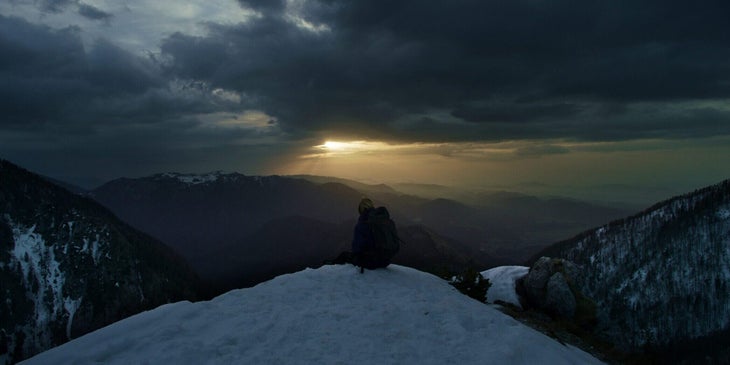
Infinite Storm is visceral; its details, sounds and both sky-high and foot-sole low film angles will make you cold. My friend and I had arrived at the matinee intending on sushi afterward at Whole Foods down the street, and emerged hurrying to the soup bar. The film is superbly cinematic: We see an aerial shot of a mountain highway, as sinuous as the river alongside it, and later that same aspect in a mirror image as someone drives the other way. A green-black mountain forest under the kind of filigree of snow that accentuates landscape features. And the cirques and creamy white ridges of Mount Washington, New Hampshire, a major climbing-hiking draw, beautiful until seething with the ferocity of its weather. Set at the junction of three storm tracks, the mountain at 6,288 feet has a fatality record like peaks three times its size (nhmagazine.com recorded 161 deaths as of 2019).
Except the mountain on the screen seems craggier somehow than those of the White Mountains. That’s because, much as we might wish it otherwise, Infinite Storm was filmed in the less costly Slovenia. Many things both are and are not quite right in this account of a hiking rescue that in every way is a mountaineering tale.
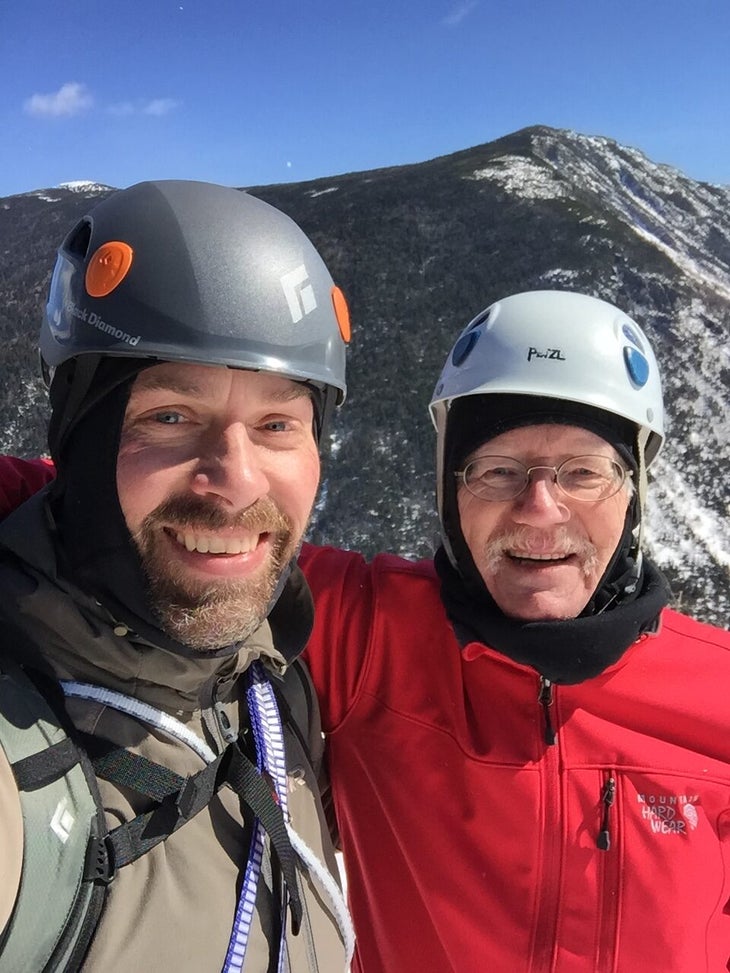
The story began in October, 2010, with an hourslong rescue effected single-handedly by Pam Bales, who was an experienced hiker, a volunteer with Pemigewasset Valley Search and Rescue Team, when she encountered the stranger by following strange sneaker tracks in the snow. The disbursement of the story began in 2018, when Ty Gagne, a New Hampshire climber (with experience rock climbing in Rumney and rock and ice in Franconia Notch and Crawford Notch), hiker, and freelancer on the side of his fulltime job, published a haunting 5,000-word account in Appalachia, this country’s longest-running mountaineering journal. First appearing under the title “Emotional Rescue,” the story gained traction the next year when reprinted by the New Hampshire Union Leader as “Footprints in the Snow.”
I read that story, marveled, shared the link with family and friends; was moved by her determination and the mystery and humanity of the story’s ending. This year the account came to the big screen, starring Naomi Watts; and the story from Appalachia is in theaters now (Gagne gets a credit).
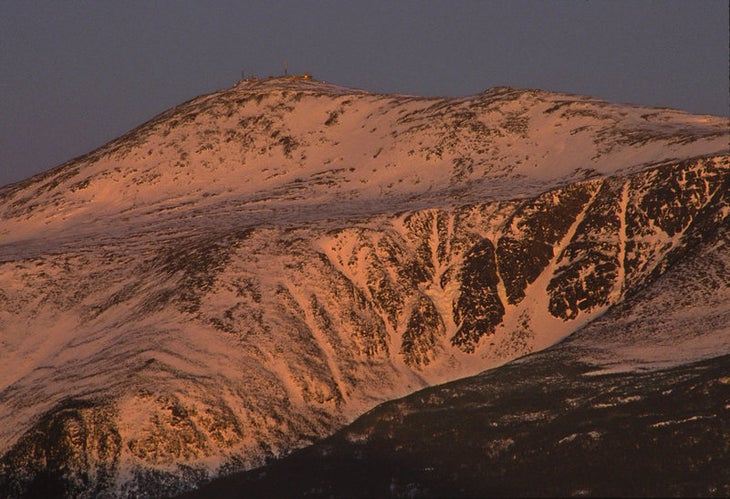
Er—wasn’t the story a little slim to stretch into a feature film? So, yup, various touches were added in the film, drawing it out and snazzing it up. Some of them I thought were dopey but fairly harmless. No, I certainly didn’t remember Bales dropping into a 20-foot spruce trap. Or a few other things I could mention. The quibbles worth going into are that, with some experience in the hills, you will think that on a classic trail Bales wouldn’t have been struggling perilously up such steep, untouched scree, nor have grimly postholed on up the steeps in heavy snowfall when she was prepared all along, knowing the forecast, to retreat. And it drove me a little nuts that fake snowflakes kept accumulating, unmelting, on Watts’s mouth and teeth like popcorn, to signal hardship. Nor does frostbite turn black in a snap.
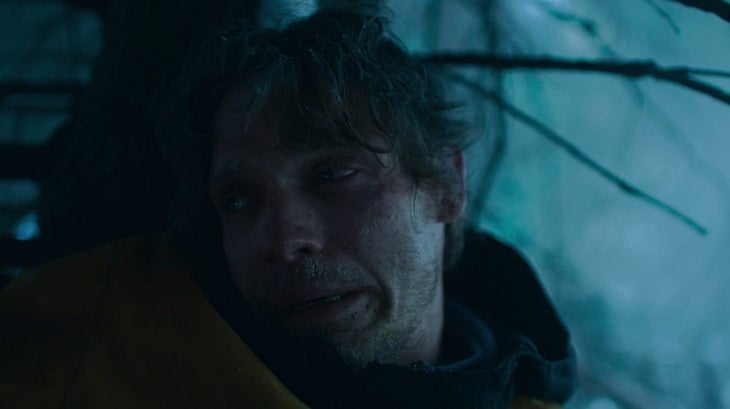
But the vast arsenal of items Bales packs—I mean, she took everything you can imagine, including extra pants, extra jacket and other layers, socks, mitts, bivy sack, space blanket, multitudes of heat packs, electrolyte cubes, a full Thermos of hot chocolate (the movie shows an array of 25 items including two Thermos flasks), ice cleats, whistle, poles, and of course a hat (in the movie she seems to have two hats) and headlamp—is basically true to life. In Gagne’s article, she did take that much. A later article in Backpacker provides some context: Bales writes that the heavy pack was for training. And while my moviegoing friend and I questioned (OK, scoffed) that her character wears goggles to hike—she would have been steaming up the slope in more ways than one—guess what, she did take goggles.
Bales’s own history is revealed in flashbacks, to events so tragic that I was actually resentful, thinking, Please, we don’t need this! I was not even out of the theater before I looked that part up and found out, to my amazement, it is true. So that sort of stalled the bitching about details.
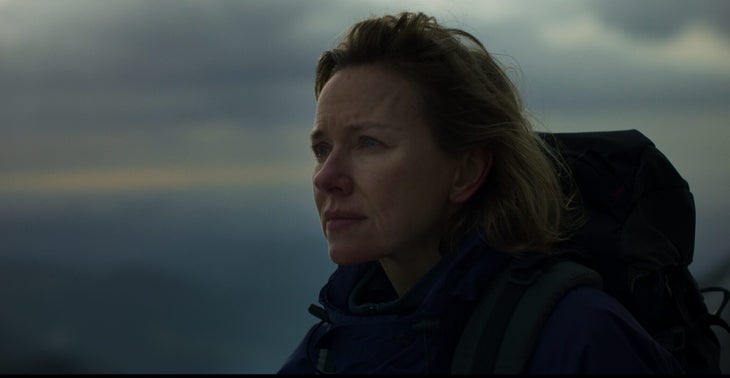
The film is effective; the talented Watts is game, un-made-up, persuasive; the filmmaker has the boldness to dart out of some vignettes without wrapping them—and to have taken on this story and mountain logistics and make the movie in the pandemic. Overall, the only criticism I care about is that the film ending has Pam Bales actually meet the guy she rescued. To me the most cosmic part of the story was that, though she finds out more—much—about the hiker, she never learns his identity. As Gagne expressed it, John could be anyone, any one of us who needs help.
This article is free. Please support us with a membership and you’ll receive Climbing in print, plus our annual special edition of Ascent and unlimited online access to thousands of ad-free stories.
The tale and this film have some—many—really good messages. Infinite Storm is directed by a woman, Małgorzata Szumowska (Polish, daughter of two journalists) and stars an actress (Watts, an Australian) who can hold the screen on her own for much of the movie, as did Tom Hanks in Castaway and Sandra Bullock in Gravity. It wants—it’ll tell you so—to show that one person can change someone else’s life. And that the most despondent person can find hope.
Another is what a great idea it is to leave your itinerary in a plastic bag on the windshield. The real Pam did that, too.
See the trailer here.
See also:
New Film Alert: The Ledge is a Modern Cliffhanger—But With a Female Lead
Climbers Are Part of “The Rescue,” Latest Film from Chai Vasarhelyi-Jimmy Chin
In “Love Hard” on Netflix, A Climber Gets Pushed Off the Wall
and
The Best Climbing Movies Streaming Online Right Now
